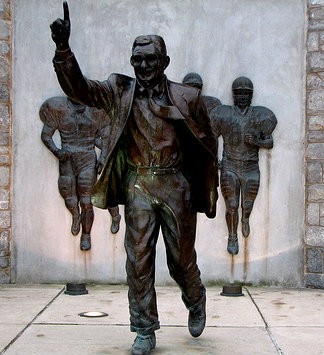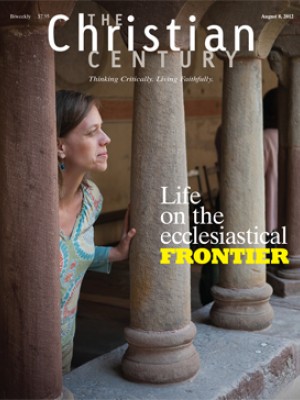Stopping child abuse

Virtually everyone by now has heard about Jerry Sandusky, who was convicted of the sexual abuse of ten boys over a period of 15 years that included his tenure as assistant coach of the hugely successful Penn State football team. You are much less likely to have heard of Vicky Triponey.
Triponey was a vice president at Penn State charged with student discipline. She clashed often with Joe Paterno, the revered head coach of the football team, over the discipline of football players who had gotten into trouble with the law. At first she thought she had the backing of the university administration, including the president, but eventually she was told that she was too confrontational and didn’t understand the “Penn State way.” She recently told CNN that she was pressured to leave the university—a move that nearly ruined her career.
Read our latest issue or browse back issues.
The Penn State way that Triponey didn’t seem to understand was most damningly described in a report issued by Louis Freeh, former director of the FBI, who led an independent investigation into Sandusky’s actions and the university’s response to it. In trying to protect the football program, Penn State officials demonstrated “total disregard for the safety and welfare of Sandusky’s child victims,” the report said, and it charged that several top university officials, Paterno among them, had enabled Sandusky to continue his abuse of children. Paterno could have put an end to the abuse if he had wanted to. Instead, he and the university chose to cover it up.
The Penn State way is by no means limited to Penn State. Other institutions, including the church, can have their own variation of it. Monsigneur William Linn, a priest in the Archdiocese of Philadelphia, was convicted in June on one count of child endangerment—the first person in the Catholic Church’s long-standing child abuse scandal to be charged with shielding priests who were guilty of the sexual abuse of children.
It is often pointed out that Paterno did many good things. He was known as a very principled person. He consistently had one of the highest graduation rates among Division I football teams. He contributed large sums of money to the university, and its library is named after him. Most of his players think highly of him. But in the end Paterno had become so powerful that he could throw the president and athletic director out of his house in 2004 when they suggested that it might be time for him to retire.
The only good news in these cases is that not only the abusers but their protectors and enablers are being held accountable. The cases reveal how powerful people and powerful institutions can empower abusers. They remind us that all institutions need to establish guidelines for adults who work with children. And everyone, including the people at the very top, need to be held accountable for doing everything they can to address and stop the abuse of children.



